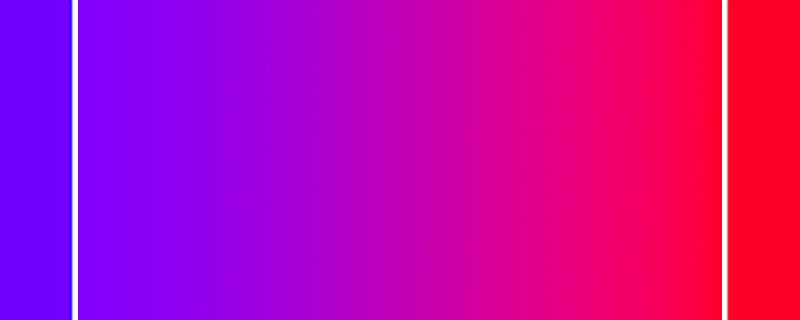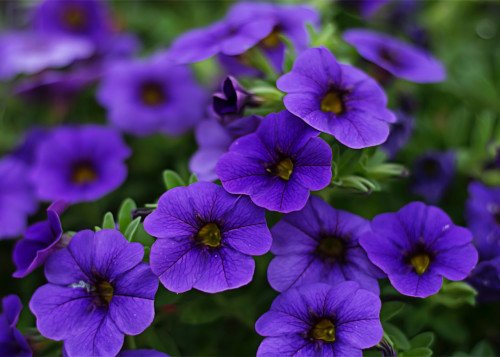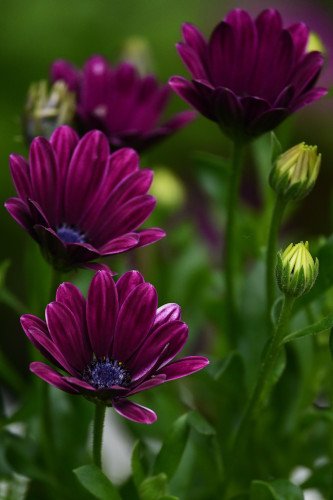Non-spectral hues
When we send a beam of white light through a prism, it is broken down into a beautiful range of vivid hues called the spectrum. When we look closely at the span of hues in the spectrum, we notice that there are several hues which are not part of the spectrum.
These are the non-spectral hues, and include magentas, purples and red-purples.
Range of spectral hues.
Range of non-spectral hues.
We see the non-spectral hues in exactly the same way as we see the spectral hues: colour is a perceptual experience, and results when our visual system (which contains the eyes, brain and all the connections in between) decodes and interprets the light that enters our eyes. When we see coloured objects, it is the balance between the different parts of the spectral composition of the light which is the starting point for seeing colours. How exactly we see those colours is the result of an ensuing complex process.
When we see a red-coloured object like an apple, the light reflecting from the object into our eye is biased towards longer wavelengths. When we see a blue-coloured car, the light reflecting into our eye is biased towards shorter wavelengths. Our visual system also compares the light reflected from the object with the light reflected from what is surrounding or nearby the object (i.e. the local environment).
When we see objects which have non-spectral hues, both longer and shorter wavelengths are entering our eye at the same time. The precise hue (and lightness/value and chroma) we see will depend on the balance or relative amounts of light we receive, from the two ends of the spectrum, compared to the middle part of the spectrum.
The visual relationships of the hues perceptible by the human visual system are such that they can be represented as forming a full 360-degree circuit. This is a preferable way to visualize the perceptible hues, compared to a linear spectrum. If we only consider the hue perceptions which can be evoked by an isolated light of a single dominant wavelength, these hues map to about 3/4 of the circle. The non-spectral magentas and purples complete the circuit of perceivable hues.
Image courtesy of David Briggs - see https://sites.google.com/site/djcbriggs/3-colour-vision for a full discussion.













